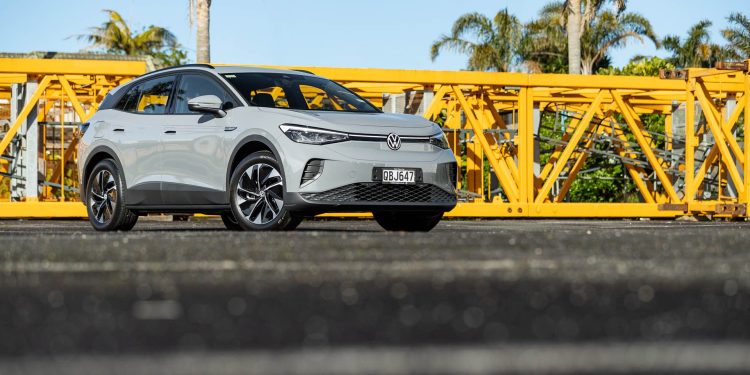2023 Volkswagen ID.4 Pro review
Words: Kyle Cassidy | Photos: Isaac Western
Volkswagen’s electric ID.4 and ID.5 double act has arrived, both entering the market at the $80k rebate mark. Here we detail the more practical looking 4.
Volkswagen’s ID movement has taken an age to reach New Zealand but finally Kiwis can now get their hands on one. There was the promise of ID bringing affordable electric motoring to the masses when the first concept was shown at the Paris Motor Show back in 2016 but things didn’t quite pan out that way.
And with ‘legacy’ brands finding it extremely difficult to fight battles on multiple fronts as they develop EVs, plug-ins and ICE machines to suit many different needs, little old NZ just had to wait.
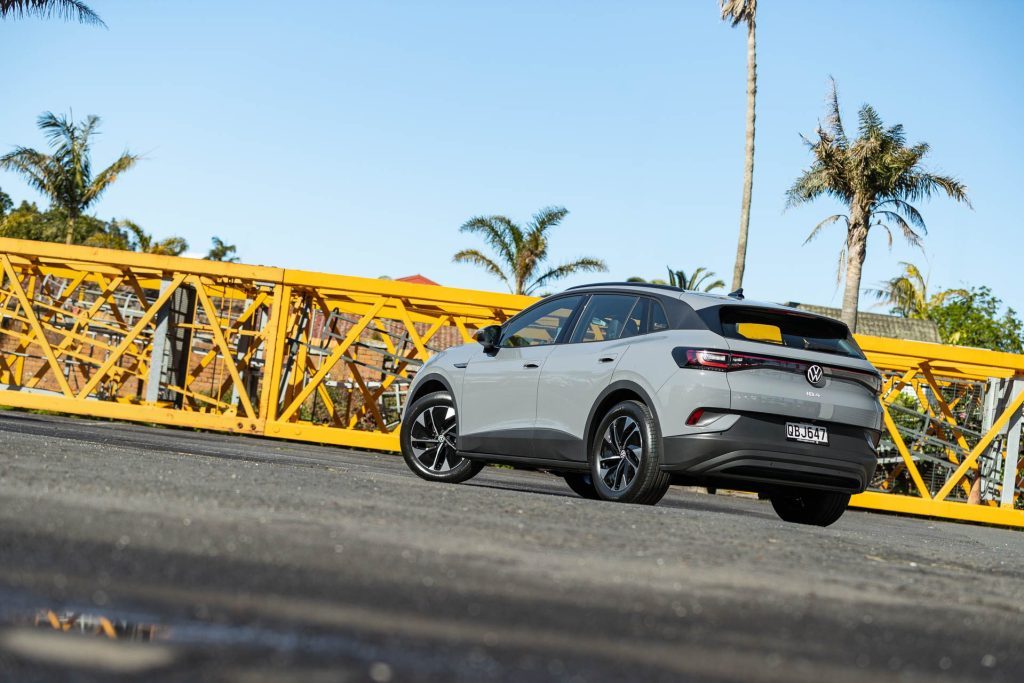
They say it has taken five long years of planning to bring the ID.4 here. But it’s apparently ‘pivotal for the brand’ in NZ, something they mentioned a few times during the local media launch last month.
While it’s not the first all-electric VW – that would be the e-Golf – it is the first of VW’s purpose-built EVs to be offered here. And it lands with its swisher looking ID.5 twin. Pricing has been set at the rebate limit, both the 4 and 5 Pro variants at $79,990 drive away, while each model has a Pro+ option (same powertrain but better specified) at $90,990 for the ID.4 and $95,490 for the ID.5.
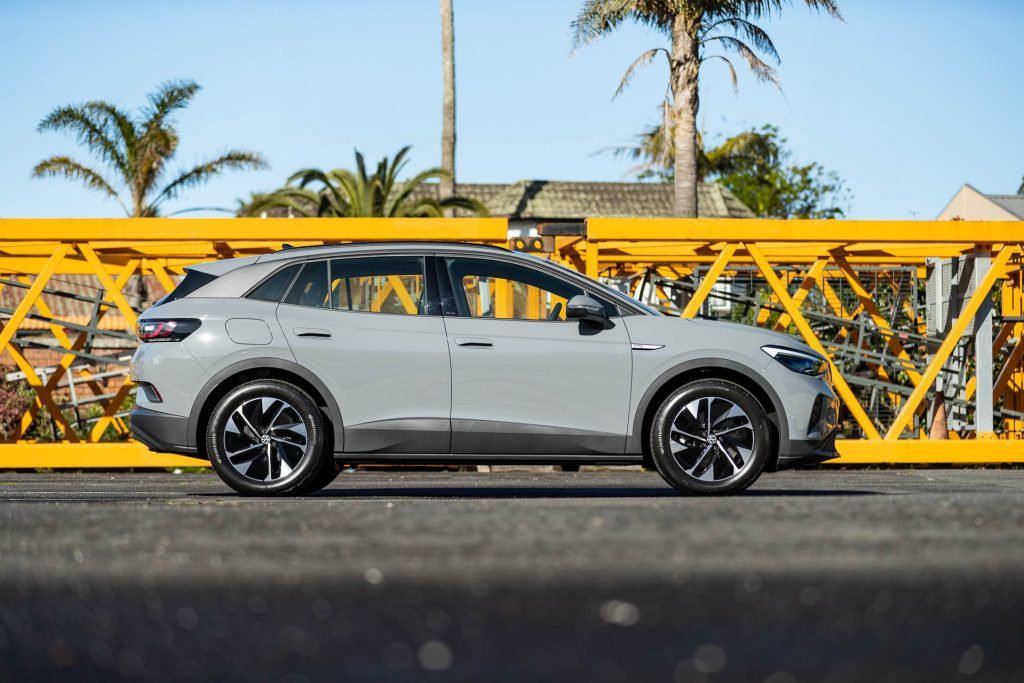
Volkswagen expects this ID.4/.5 model to be its best selling passenger car, accounting for one-fifth of its volume this year and more next year, with the potential for over 500 sales. And they say they won’t run into supply issues.
The ID.4 sits on the firm’s MEB platform that also underpins e-tron Q4/Q5, the various Enyaqs, the forthcoming Cupra Tavascan, the Cupra Born, ID.3 and the Chinese market ID.6 and .7, as well as the ID.Buzz.
Our model has a single, rear-axle mounted motor making 150kW, 310Nm and spinning to 16,000rpm. It’s of the permanent magnet synchronous type, said to deliver more power relative to how compact it is.
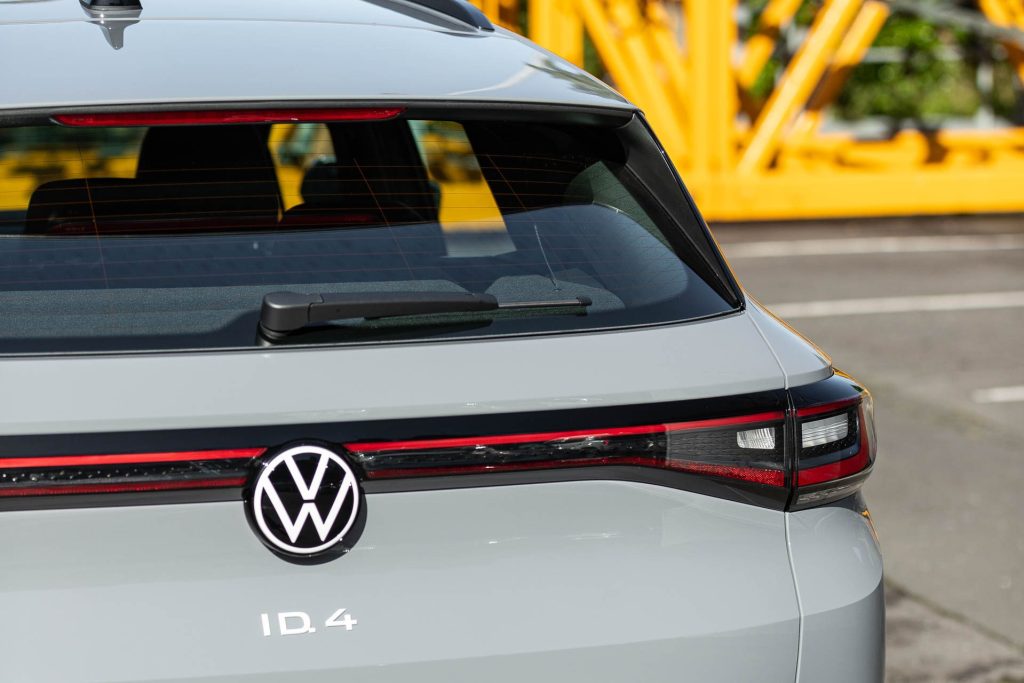
And, nerd fact, the copper wire that is wound around the stator has a rectangular cross section shape, meaning more copper and less air space between each winding, allowing them to pack more of it in.
Apparently, the more wire you have, the more power dense your motor is.
The 500kg NCM lithium-ion battery is made by LG Chemistry. It sits low in the chassis, helping with overall rigidity and weight distribution which is said to be close to 50:50. It has 82kWh gross (77 usable) capacity, is liquid cooled, runs on a 400V architecture with a max AC charge rate of 11kW (that’s on three-phase power, 7.2kW on single phase) and up to 125kW at a DC fast charger.
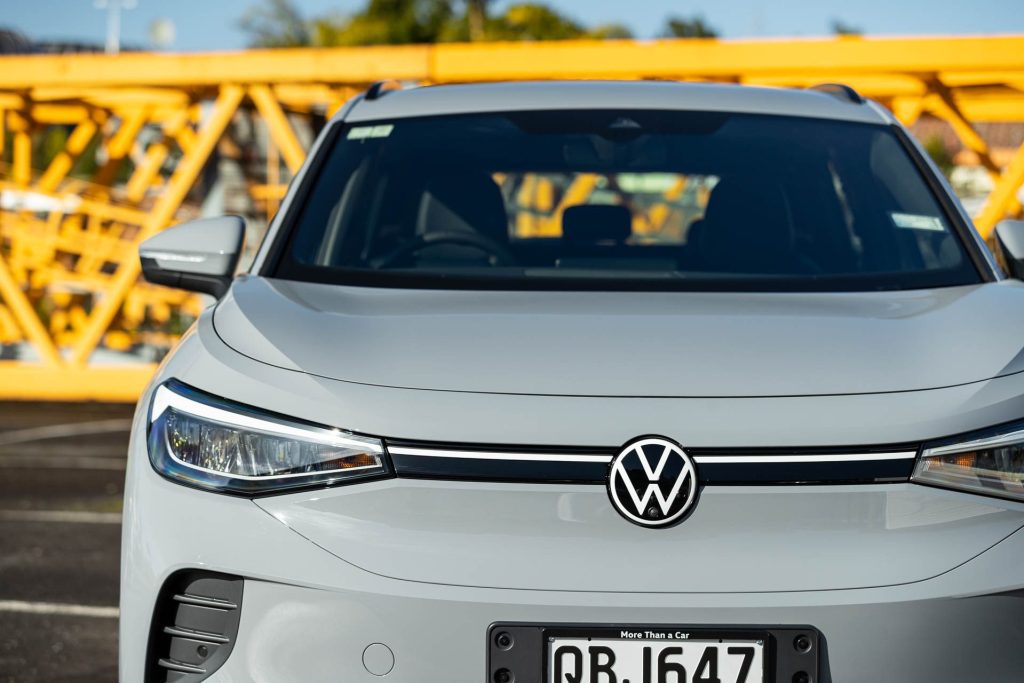
The WLTP range figure is quoted at 519km.
An interesting MEB component is the rear drum brake but there is a method to the madness. You can get brake drag with discs (the caliper not fully releasing from the rotor and the brake pad ‘dragging’ on the disc, adding resistance) and this is eliminated with a drum, which can improve range by up to 15km.
Drums also make less particulate matter, tend to last longer and help VW save a few bucks per unit made.
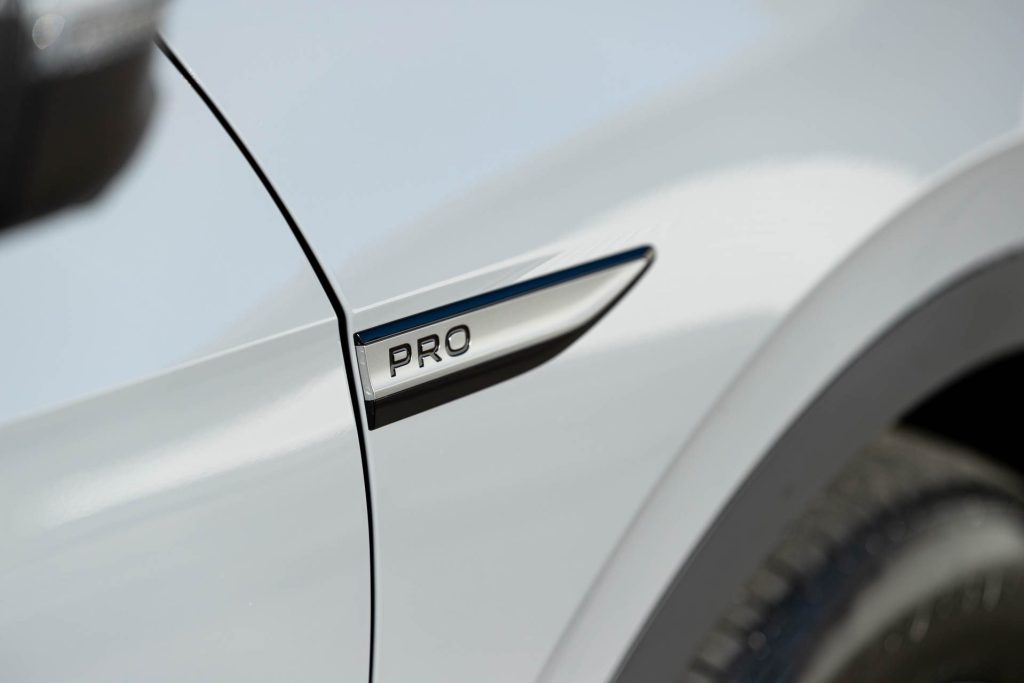
The ID.4 measures up at 4582mm, 70mm longer than the Tiguan, while the electric’s wheelbase is 88mm longer (2769mm), giving it more interior space. It’s down about 70L on luggage space however, and towing capacity (1000kg vs 1800kg for the front-drive Tiguan).
But it emits no CO2, gets a rebate instead of having to pay a fee, fixed servicing costs are cheaper ($990 vs $1345) and your ‘fuel’ bill will be much cheaper in the long run.
The ID.4 and .5 are essentially the same, the latter with a sloping roof for a coupe-like profile and it gets a sportier suspension tune. It also has a subtly restyled lower bumper, and a slightly longer quoted range at 530km due to its aero figure 0.26, 0.02 better than that of the ID.4.
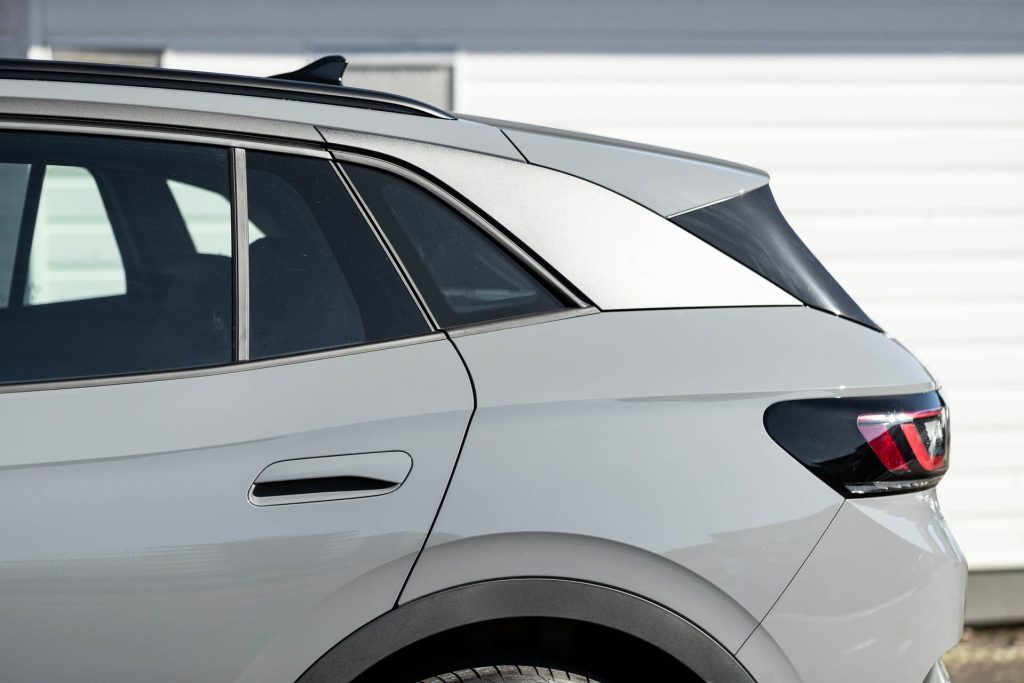
Both the exterior and the cabin wear an electric-centric design, the body smooth and grille-less, while inside there is an airy feel. There’s also a mix of plastic quality, some of it better than others, and in places you can see or feel where they have tried hard to save a few dollars when making these expensive cars.
We like the small instrument binnacle right in front of you (moves with the steering column) showing just the essentials. You can fit a lot of info on a small display, all of it legible, and do without all the other nonsense and customisation.
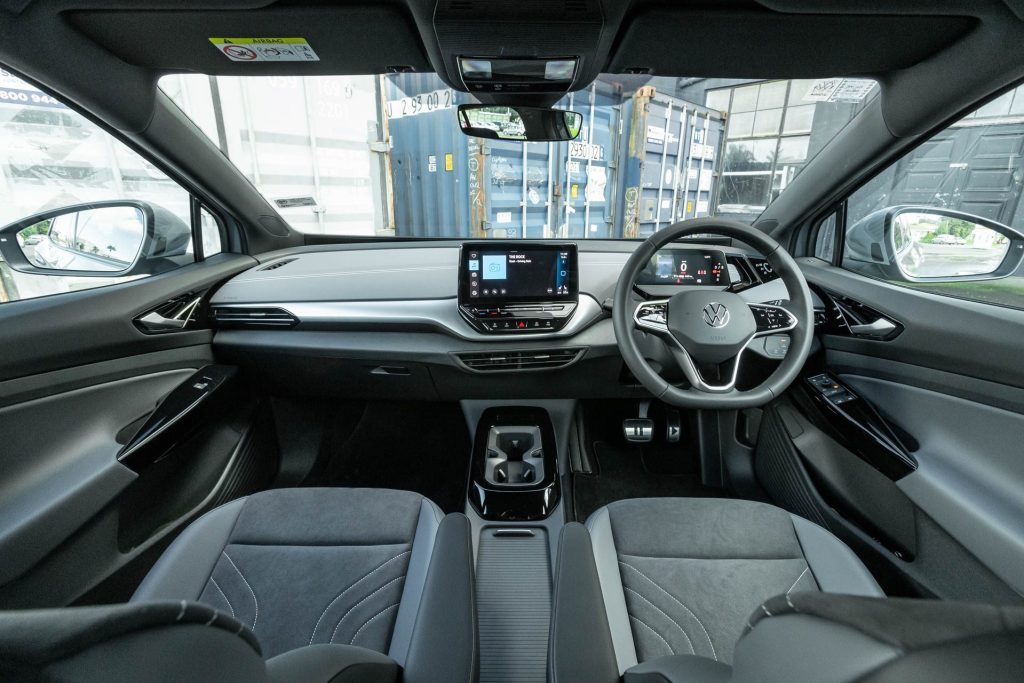
It’s always interesting to watch your passengers navigate through the Volkswagen infotainment system; a perplexed look is often followed by a few cuss words. It’s not the most intuitive of things, but once you know how it’s okay.
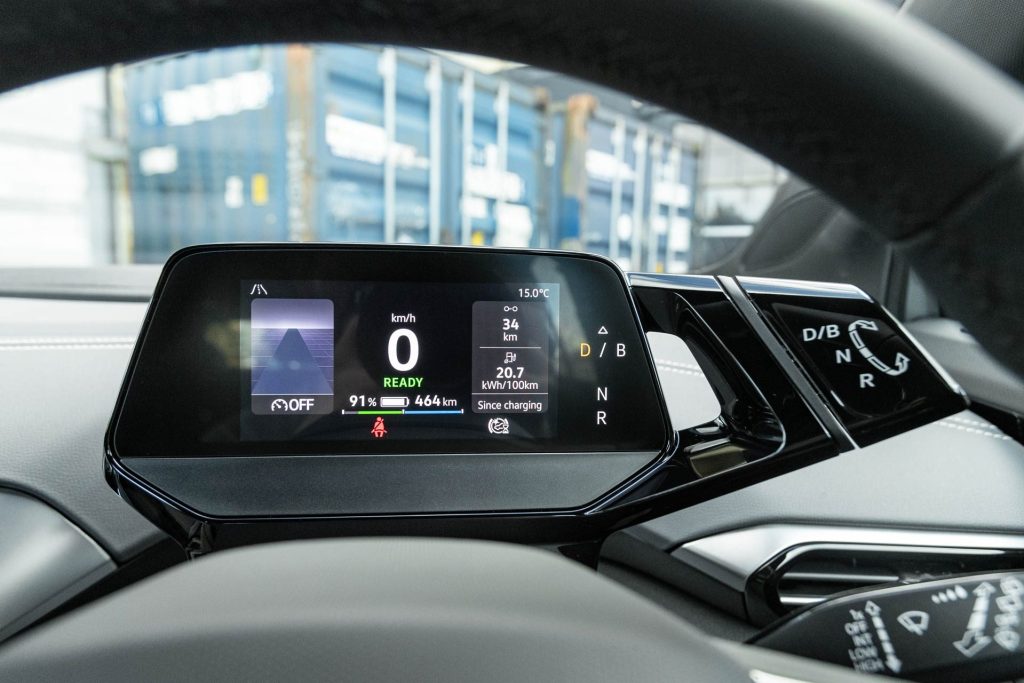
Sort of. Our cars lack sat nav (so no help with finding a charger when you need one), and as we are an offline market, there’s no data connection and no OTA functionality. There is connectivity for smartphones, ample supply of USB-C ports and a charge pad.
While the ID.4 Pro gets a 10-inch screen, the others get a 12-inch unit. There’s good storage with the big door pockets and centre bin but there’s only half a glovebox. It has a spacious driving position, the adjustment for the seat on the Pro model is manual but there is enough of it, while the outward view is generous.
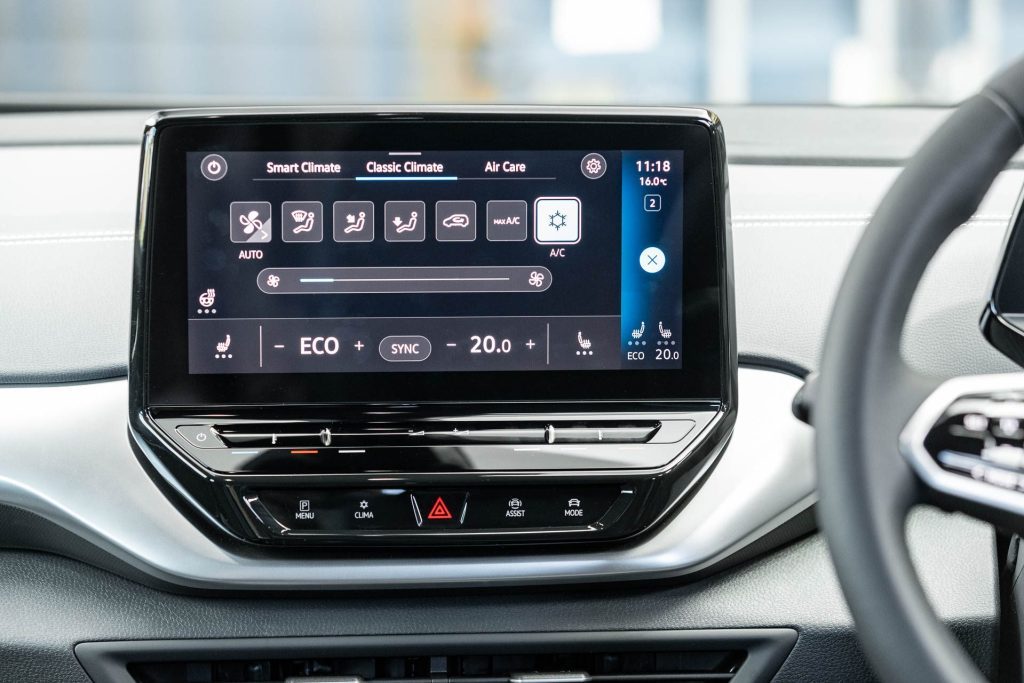
It’s an easy thing to board too, interference from the sill minimal, the seat height just right. And that goes for rear passengers as well. A flat floor gives more generous legroom and you can squeeze someone in the middle occasionally.
The tailgate might not be powered but you’ll get over it, as the hold is decent, with a low load height. There’s no spare of course, just a little cubby under the floor for the supplied trickle charger and while there’s no flat floor once you split fold the rear seat, it’s not a biggie either.
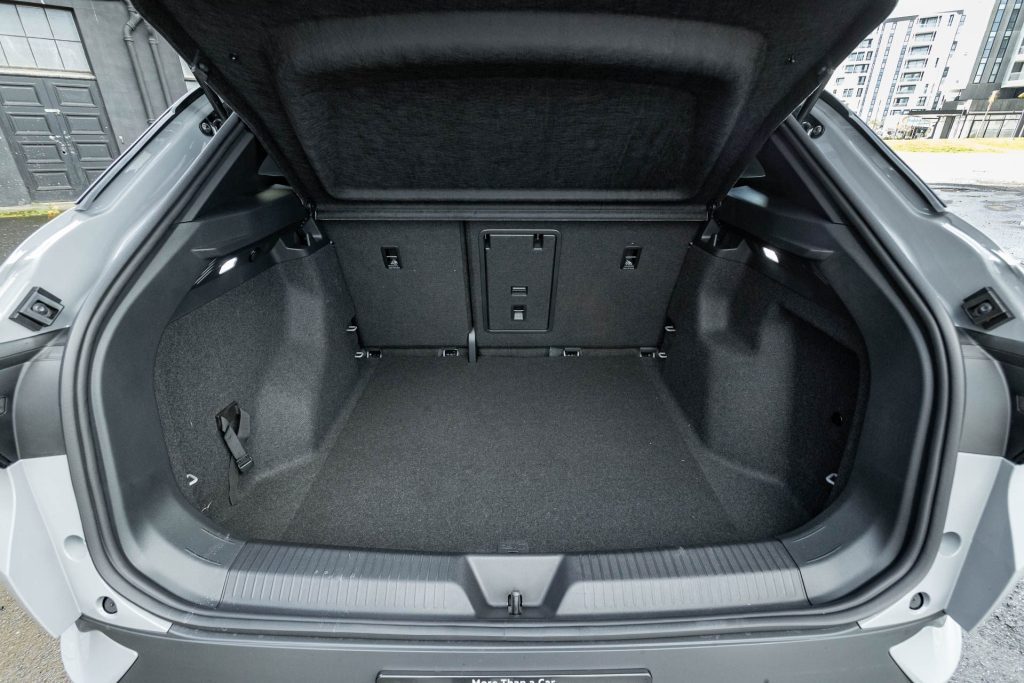
They’ve made it easy to drive too. It’s another one that’s ready to go as soon as you’re seated; foot on the brake then rock the ‘twist and go’ gear selector to Drive or Reverse and you’re away. The steering is quick and breezy and there’s a great 10.2m turning circle along with a reasonable 360-degree camera.
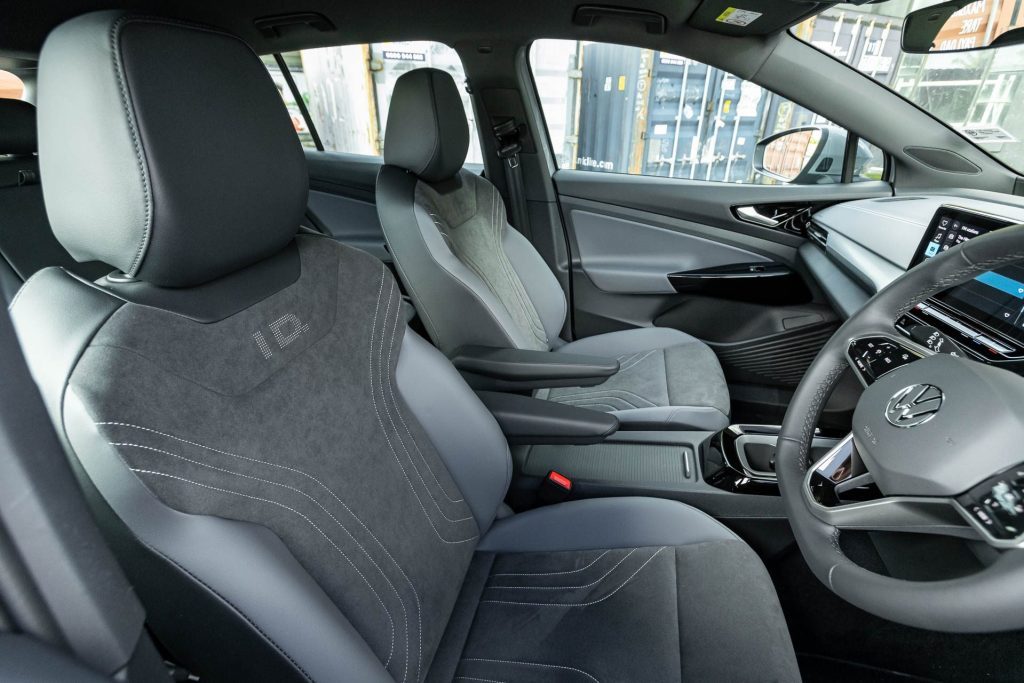
The gear selector is in a handy position (just up on the side of the instrument screen) for when you want to add some brake regeneration. This, VW has kept simple. In D it coasts along when you are off the go pedal, while selecting B mode adds a reasonable braking effect but not quite a one-pedal mode.
The action of the brake (or pause) pedal is all okay too, no weird snatchiness. There is no adaptive mode as the ID.4 does not have traffic sign recognition for our market.
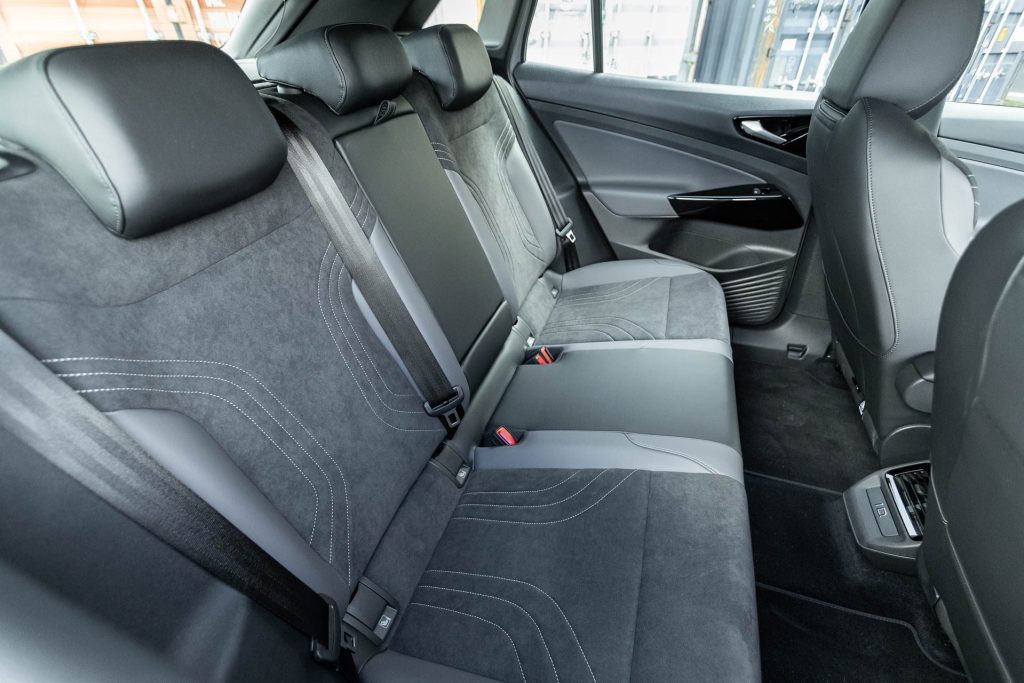
The ID rides reasonably well both in and out of town, a few bumps transmitted via the rear axle where the motor hangs out, and it’s hushed enough on coarse chip at 100km/h. There is genuine squirt when you need it but with 150kW pushing 2148kg, it’s never going to be quick.
Among the myriad power points in the car, none of them was a 12V socket so we couldn’t power the Vbox to get the numbers but it’s said to get to 100 in 8.5sec. But the easy torque is ever present at town speeds, so it’s quick enough when you need it to be.
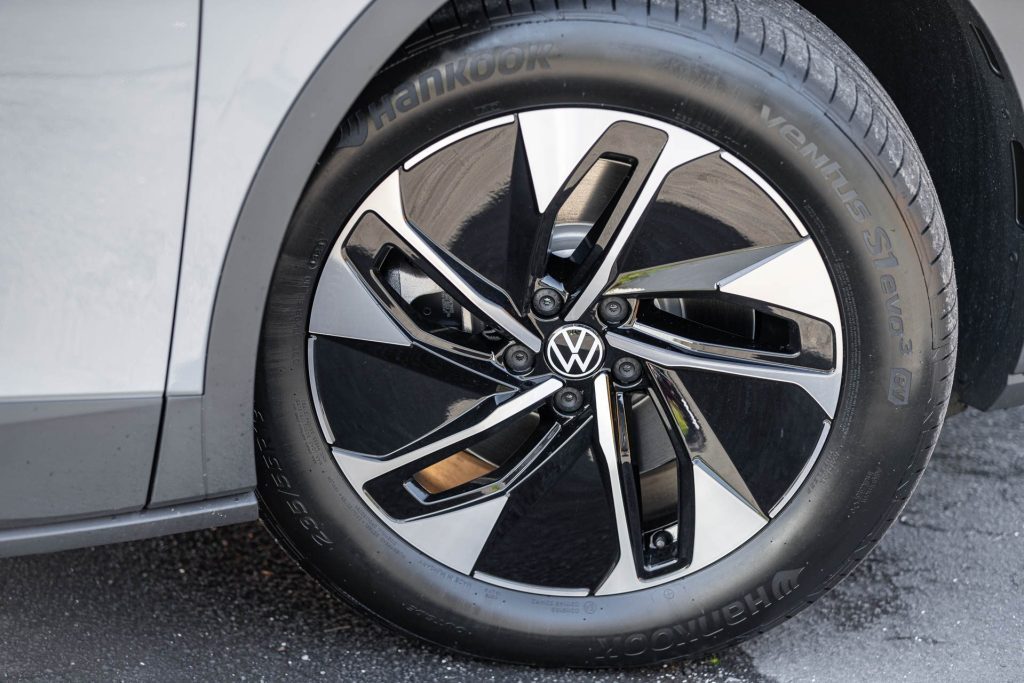
The ID.4 goes alright through the turns too. The steering is keen, the front end turning accurately and holding on assuredly. That’s thanks to a decent balance and a low centre of gravity (it feels well grounded) and some digital brake intervention when you start pushing the envelope.
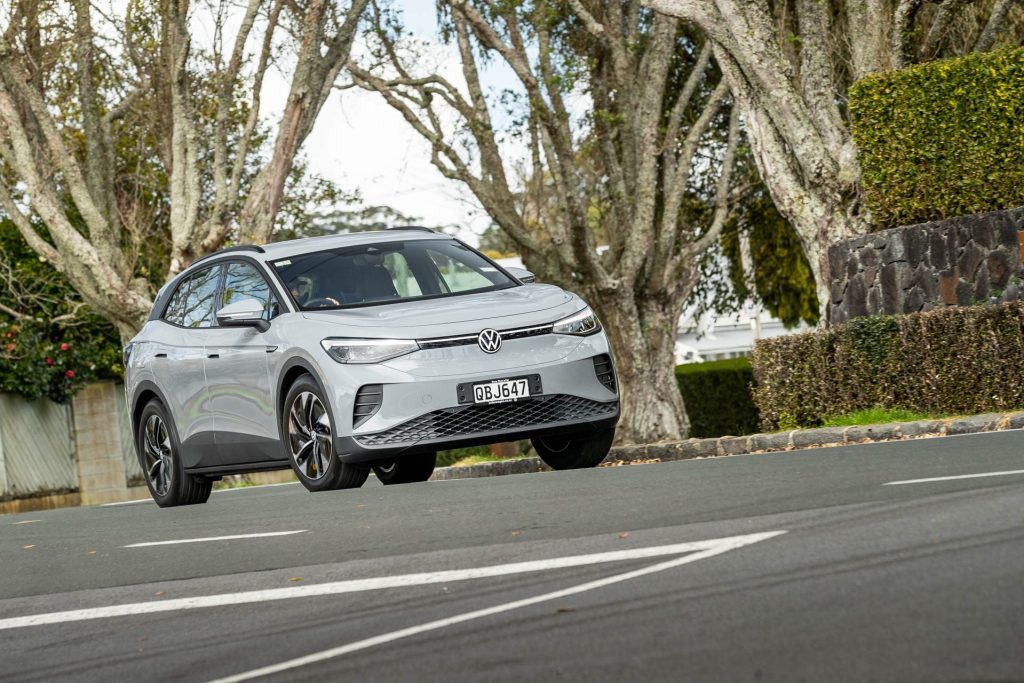
The D mode is good for main highway cruising, it’ll coast a fair distance when you’re off the go pedal, while the B mode is helpful on more winding terrain, maximising that regeneration when heading into turns.
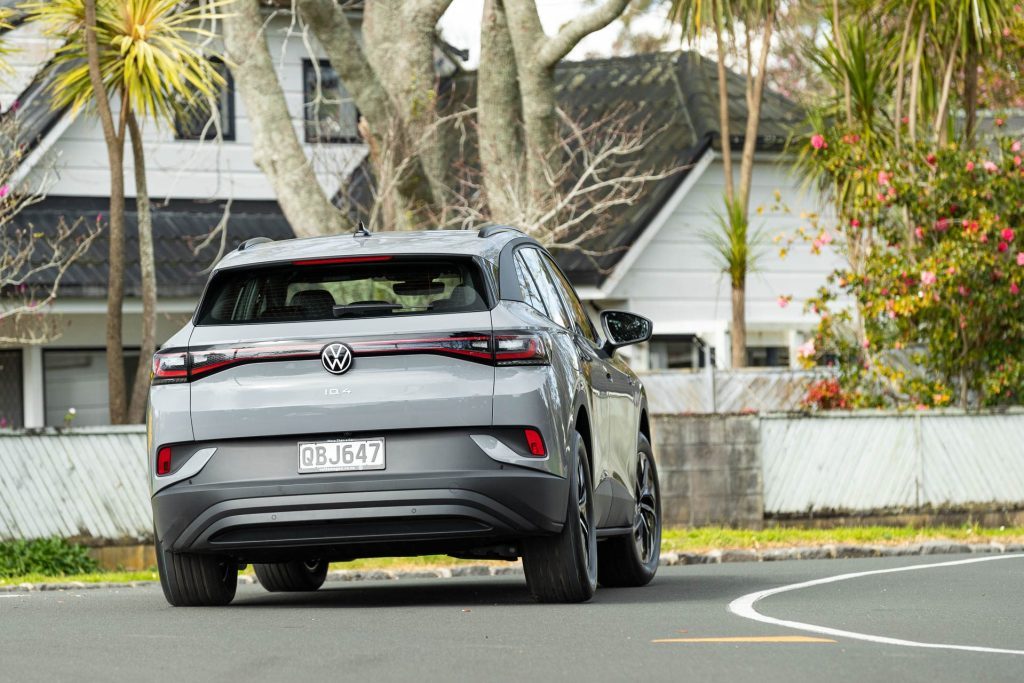
Overall, our consumption figure registered 20kWh/100km over the few days we had this. But it was cold and we needed some cabin heat. Expect better consumption in warmer months.
This has a large battery which we didn’t need to recharge during our time. We covered 200km, using just over half the battery, which showed it had 240km left to run.
So an urban/motorway range of 440km seems about right. And it’ll provide you with more than enough to go intercity between chargers.
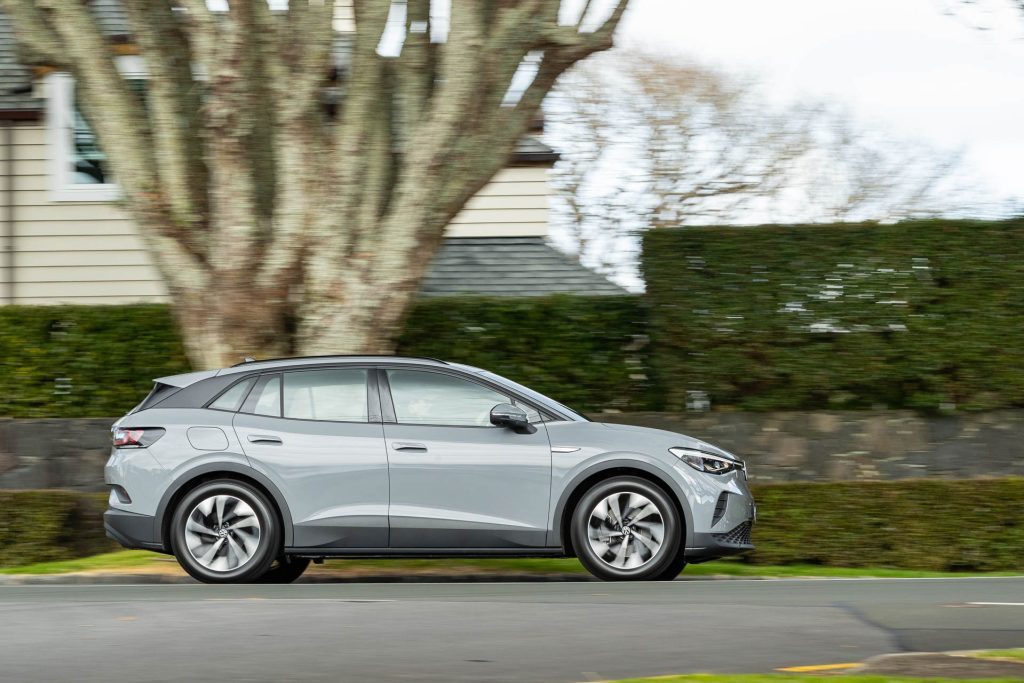
Given the price disparity between ID.4 Pro and Pro+, the entry models make much more sense for the buyer but VW New Zealand is likely to be squeezed for cents on each sold.
They also hinted that should a new Government make changes to the rebate structure, or nix it altogether, they’d imagine there’d be a shift upwards in pricing for those models lingering around the $80k mark. So get in quick, maybe.
| Model | Volkswagen ID.4 Pro |
| Price | $79,990 |
| Clean Car Discount | Rebate – $7,015 |
| Motor | 150kW/310Nm |
| Battery | 77.0 kWh |
| Range | 519km |
| Drivetrain | single-speed auto, RWD |
| Energy Use | 16.9kWh/100km |
| C02 Output | 0g/km |
| 0-100km/h | 8.5sec |
| Turning Circle | 10.2m |
| Wheelbase | 2769mm |
| Stability systems | ABS, ESP, TV |
| Safety | AEB, ACC, BSM, LDW, RCTA, ALK |
| Luggage capacity | 543-1575L |
| Tow rating | 750kg (1000kg braked) |
| Service intervals | 12 months, 15,000km |
| Warranty | 5yrs, 150,000km |
| ANCAP rating | 5 Stars (2021) |
| Weight | 2148kg (claimed) |


